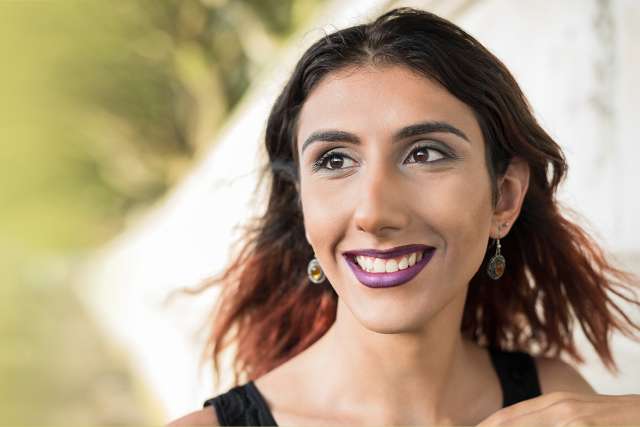Gender Health
The UCLA Gender Health Program ensures that all patients have access to compassionate, inclusive, and equitable care.

Why choose UCLA Health for gender affirming health care?
Our mission at the UCLA Gender Health Program is to provide healthcare equality for people who are transgender or gender-diverse (TGD) that is sensitive to everyone’s individual needs. Everyone’s journey is unique. At UCLA we recognize that every person requires something different, and we want to get to know you so that we can take care of the whole you.
Some of the highlights of the Gender Health Program include:
National recognition: We’ve achieved recognition as an LGBTQ+ Health Care Equity Leader from the Human Rights Campaign (HRC) Foundation annually since 2017. The HRC evaluates facilities’ policies and practices related to equity and inclusion when caring for LGBTQ+ patients, visitors and employees.
Full-spectrum health care: We offer primary and specialty care to transgender and gender-diverse people of all ages.
Multidisciplinary approach: Our teams work together to provide comprehensive and compassionate care in a safe and welcoming environment for all our TGD patients.
Mental health resources: We offer a variety of behavioral health services for TGD children, adolescents, and adults.
Convenient locations: Our primary care providers who regularly care for TGD patients conveniently practice at several locations throughout the greater Los Angeles region. This means you can always access expert care close to home.
Our services
In addition to providing comprehensive medical services to all transgender and gender-diverse patients, we offer specialty programs for patients with specific concerns, including:
Primary care services: We offer the full spectrum of primary care services, including preventative care, vaccinations, chronic disease management and sexual health services, offered by primary care providers who are sensitive to caring for LGBTQ+ patients and the needs of the TGD community.
Hormone therapy: We provide individualized gender-affirming hormone therapy, using a variety of medications and approaches to ensure that your treatment is meeting your goals.
Facial reconstruction: Our craniofacial, plastic and ENT surgeons offer facial reconstruction procedures to best achieve your goals, including forehead reconstruction, cheek augmentation, chin reduction, cheekbone reduction, facelift, neck lift, brow lift, eyelid, nose or ear surgery, lip augmentation and tracheal shave.
Chest/Top Surgery: Our expert team of specialists in plastic surgery perform gender-affirming chest and breast surgeries, including bilateral mastectomy with masculinizing chest reconstruction, and breast augmentation.
Genital Reconstructive Surgery/Bottom Surgery: We have assembled an expert team of specialists in urology and gynecology to perform gender-affirming surgeries, including phalloplasty, metoidioplasty, orchiectomy and vaginoplasty.
Gynecologic Care: Our gynecologists offer the full spectrum of gynecologic care, as well as surgical services including hysterectomy and evaluation for concerns following reconstructive surgery.
Reproductive Health & Fertility: We provide a range of reproductive services to help our patients reach their reproductive desires, including assistance with egg or sperm preservation prior to gender-affirming treatments or surgeries.
Voice Therapy & Voice Surgery: We provide both voice therapy and surgery to help you achieve your vocal goals safely and effectively.
Behavioral Health Services: We offer a variety of behavioral health services for children, adolescents, and adults, including assessment for behavioral health concerns, therapy sessions, medication management and assistance obtaining documentation of medical and surgical readiness if needed.
Treatments we offer
We provide a range of treatments and gender affirming health care options to support transgender and gender-diverse patients. Common treatments we offer include:
Gender affirming mental health services
Transgender and gender-diverse individuals often have unique concerns. Our specialized counselors provide one-on-one, family or group therapy options. We match you with the right therapist for your needs.
Fertility treatment
Treatments like hormone therapy and surgery can alter a transgender person’s fertility. We offer fertility preservation options to transgender patients before transition.
Transgender health care
Transgender patients may opt for noninvasive treatments to help them transition to a gender expression that matches their gender identity. Common options include:
Hormone therapy/puberty blockers: Patients may opt to take hormones such as androgen or estrogen to achieve a more desirable gender expression. Younger patients may also take blockers or drugs that prevent puberty.
Voice therapy: Speech-language pathologists offer voice therapy to help patients achieve a pitch, resonance and intonation that matches their gender identity. We also offer communication therapy to help patients communicate in a way that expresses their truest self.
Gender affirmation surgery
For some people, gender-affirming surgery is a vital step in the transitioning process. At UCLA Health, you’ll find:
Chest reconstruction/top surgery: We offer bilateral mastectomy to achieve a more masculine chest and breast augmentation to achieve a more feminine chest.
Facial reconstruction: Our expert craniofacial and plastic surgeons provide a variety of surgery options to help patients achieve their desired appearance.
Genital reconstruction/bottom surgery: We collaborate closely with specialists in plastic surgery, urology and gynecology for surgical transitions that involve changing a patient’s genitalia. Our specialists recommend surgery options based on specific concerns and goals.
Meet our team
Our team includes primary care physicians as well as expert surgeons, mental health professionals, speech-language pathologists, social workers and more. We collaborate to offer you comprehensive, evidence-based LGBTQ+ health care.
Contact us
At the UCLA Gender Health Program, we understand the unique challenges that gender-diverse patients face when searching for health care. Providing personalized gender affirming health care involves collaboration between specialty physicians, which is why we have a Care Coordinator as your first point of contact. To discuss your individual goals and needs, so that we can plan the best approach to referral coordination and appointments, please call our UCLA Gender Health Program care coordinator at (310) 267-4334.
For questions or additional information, email [email protected]
Note: To protect your privacy, please do not include any personal images if you choose to e-mail us.
Phone Intake Visit
The first step in enrolling in the UCLA Gender Health Program is an over the phone intake visit with our case management team. During the phone intake appointment our case management team will ask a variety of questions that will allow us to streamline your care through our health system and help us link you to any additional information or community-based resources you might need. Intake appointments are available on Mondays, Wednesdays and Fridays from 1–5 p.m. and Tuesdays and Thursdays from 8:30 a.m.–12 p.m., although we may be able to accommodate alternative schedules as necessary.
Find your care
UCLA Health is a safe and supportive environment for transgender and gender-diverse patients. Call 310-267-4334 to make an appointment.
